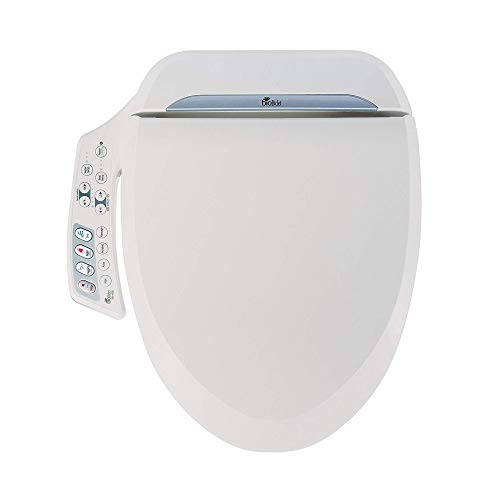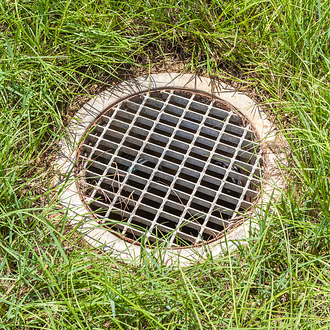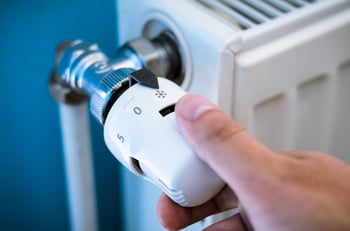Best Bio Bidet for You: Finding the Perfect Machine to Get You Clean
We are a participant in the Amazon Services LLC Associates Program, an affiliate advertising program designed to provide a means for us to earn fees by linking to Amazon.com and affiliated sites.
There are many reasons to consider using a Bio Bidet for your backside. Your use of toilet paper will reduce drastically. Not needing toilet paper alone saves money. Also, if you have a septic system, using less toilet paper has other advantages. Also, there are medical conditions that improve with the use of a bidet because bidets are more hygienic and reduce rashes and urinary tract infections.
There are many bidets available on the market. Bio Bidet is well informed on bidet research and offers a selection of bidet seats that make your bathroom experience practical, comfortable, and efficient.
What Is a Bidet?
The bidet has been around since the 1700s. Originating in France, the bidet has come along way since its humble basin-like beginnings. These days, the bidet is a part of modern plumbing.
The bidet is primarily used to clean below the belt hygienically. Sometimes the bidet is a separate feature altogether, usually located next to the commode. However, you will see bidet toilet seats that attach to your commode, as well.

Who is Bio Bidet?
Bio Bidet is invested in your bathroom experience. Therefore, they provide their customers with bidets on the cutting edge of technology. Bio Bidet offers bidets and accessories for every budget. Their options include budget-friendly and straightforward designs and premier-class with extra features you did not know you wanted.
How We Reviewed
We went through an enormous amount of customer comments to determine what Bio Bidet products have to offer. We understand we all have different needs, so we looked for features that serve specific functions that customers want.
When we reviewed, we took into consideration the characteristics of each Bio Bidet product. Furthermore, we compiled seats that meet a wide variety of budgets.
Recommended Read: All Plumbing Terminology
Bio Bidet BLISS BB-2000
Bio Bidet’s Bliss BB-2000 is a Premier Class bidet with extra features that make the bathroom process pleasant.
The Nozzle
The nozzle is stainless steel, which makes it very durable. The nozzle also uses technology to self-clean, so you do not have to worry about sanitation. Also, the nozzle has three spray features for posterior, feminine, and vortex washing. There is no question of cleanliness with this bidet seat.
The Lid and Seat
The lid on this bidet seat and the lid are slow-closing, so you do not need to worry about the lid slamming down.
The heated seat ensures comfort, and the shape of this seat is elongated.
The maximum weight capacity for this bidet is 400 pounds, and the necessary batteries for the remote are included.
The Extras
The bidet includes a nightlight for the late-night trips to the bathroom, where you do not wish to blind yourself with the bathroom light.
There is a wireless remote, as well, to give you full control over the features of the bliss BB-2000 by Bio Bidet.
Also, it is not just the seat that is heated. The water temperature is also adjustable to ensure comfort and cleanliness without that cold water shock.
Bio Bidet BLISS BB-600 Ultimate
Bio Bidet’s Bliss BB-600 Ultimate is a luxury class bidet seat packed with extra features you didn’t know you needed.
The Nozzle
The nozzle for this bidet is self-cleaning, as well. The nozzle performs both front and back cleaning, as well as a massage setting.
You may adjust the water temperature with this model, and the motor is quiet.
The Lid and Seat
The seat comes in both elongated and round, depending on your toilet design and preferences.
The Extras
This bidet has a wide range of features. The controls are on the panel to the side of the seat, so they are in easy reach. Plus, the buttons are easy to understand and large enough to see with ease.
Also, there is a warm air-dry feature if you prefer that level of comfort.
Lastly, because the seat has its own tank to heat water, you only need a cold water line for installation.
Bio Bidet Slim Zero
The Slim Zero by Bio Bidet is an economy class bidet seat, but don’t let the word economy fool you. This bidet is full of the features you need in a bidet.
The Nozzle
The nozzle is a dual system, and you engage the nozzle from a lever on the side. Also, the lever is chrome platted.
This particular seat has both a posterior wash and a feminine wash.
The Lid and Seat
This affordable seat is elongated and includes a slim design. The seat itself is very sturdy despite being low-profile.
The Extras
The valve’s construction is high-quality brass, which outperforms plastic valves.
The seat includes a nightlight for those late-night trips, and the light is adjustable from a bright setting to a softer blue.
Even though this bidet is budget-friendly, the controls are easy to use, and its function offers optimal cleaning.
Finally, do not worry about cold water shocks with this bidet. You will find the water is room temperature.
Recommended Reading: Best Low Flush Toilets on the Market
Bio Bidet Slim ONE
Bio Bidet’s Slim ONE is a luxury class bidet seat that has some ingenious features.
The Nozzle
The nozzle is stainless steel and offers both feminine and posterior washing. Furthermore, this seat has a turbo wash.
Also, the nozzle is self-cleaning, meaning you will not worry about sanitation.
The Lid and Seat
This seat has a sensor that does not allow the bidet features to engage without sitting on the seat. This feature ensures there are not bidet-related accidents for someone to clean up.
You have a choice between a round or elongated seat with this option.
The Extras
The seat has a nightlight that glows, which saves you from the harsh reality of a bathroom light in the middle of the night. However, you can turn off the nightlight if you wish.
You control this bidet with a side panel that features large and east to understand buttons.
If you prefer to take your time, this bidet ensures you have warm water for longer than other seats.
Bio Bidet Slim TWO
The Slim TWO by Bio Bidet is similar to the previously discussed bidet seat, but it has some notable differences.
The Nozzle
The nozzle is still the stainless steel three-in-one self-cleaning system.
You can expect both feminine and posterior cleansing. However, this model also has a turbo wash and a massage cleaning setting. The cleaning path is wider, and the water pulsates if you wish.
Furthermore, there is a child setting, as well.
The Lid and Seat
The seat is heated, and the seat and the lid are slow-closing, so you do not have to worry about slamming lids.
Also, you have a choice with elongated or round with the Slim TWO.
The Extras
The Slim TWO has a night light, as well, and the sensor that prevents the use of the bidet without someone sitting.
Lastly, the controls are via a wireless remote.
Bio Bidet BB-1000 Supreme
The luxury class BB-1000 Supreme by Bio Bidet is all about comfort and the extras.
The Nozzle
The nozzle is the same three-in-one system that self cleans that you have come to expect with Bio Bidet.
The nozzle offers massage cleaning, a wide cleaning path, as well as posterior and feminine washings. Also, the nozzle oscillates and includes a pulsating wash feature.
The Lid and Seat
The seat is heated and includes the body sensor that prevents the bidet’s use when no one is sitting. The lid and seat are slow to close, so pinched fingers and slamming seats are not a problem.
The Extras
This bidet includes a wireless remote and a patented enema wash for those shy bathroom moments.
The seat has a reservoir for heating the water, and the tank delivers water through the bidet system with consistency.
Also, this seat offers a steam feature for added pampering and a powerful deodorizer.
Bio Bidet BB-800 Prestige
The BB-800 Prestige by Bio Bidet is a luxury-level bidet seat that will set you up in style while in your bathroom.
The Nozzle
The nozzle is self-cleaning and offers osculating as well as pulsating water streams.
You will find both a posterior cleaning spray and a gentler front feminine spray.
Also, the nozzle has a turbo wash stream.
The Lid and Seat
The seat is heated, and the temperature is adjustable to your preferences.
Also, you have a choice of both round or elongated for this bidet seat.
The Extras
This seat operates with a side panel on the right side of the seat; the buttons are large and easy to understand.
If you prefer to air dry, the bidet seat has temperature adjusted warm air.
Also, no cold water shocks with this bidet because it has adjustable temperature control for heated water for cleaning.
Bliss BB-1700
The Bliss BB-1700 is a premier class of bidet seats by Bio Bidet, and this seat has a lot to offer.
The Nozzle
The stainless steel nozzle self cleans to ensure your bidet experience is sanitary every time you sit down.
Also, the nozzle delivers water to both the front for a gentle feminine cleaning and the posterior. There is a massage cleaning feature as well as oscillating cleaning with a broader path.
The Lid and Seat
Both the seat and the lid close slowly, and the seat has adjustable temperature controls for maximum comfort. The seat is available in elongated.
The Extras
The Bliss BB-1700 features a heating system that involves a tank that holds water and a heating coil to bring you the best water heating technology out there.
Bio Bidet USPA 6800
Bio Bidet’s USPA 6800 luxury class bidet seat is both classy and uses cutting edge bidet technology.
The Nozzle
The stainless tell nozzle self-cleans, so you do not have to worry about hygiene.
Also, the nozzle delivers multiple cleaning options. For instance, you can choose between oscillating or pulsating, and your cleaning spray track is wide enough to do a great job. Furthermore, there is a posterior and feminine setting for the spray.
The Lid and Seat
The lid and seat are slow to close, which eliminates slamming seats. Also, the seat itself is heated for comfort.
You may choose between round or elongated seats, as well.
The Extras
For those who prefer to air dry, this seat features a dual-speed warm air dry. The speed of the air is not the only adjustment in your control because you can control the temperature of the air, as well.
This seat has a child-friendly setting, too.
Lastly, there is a deodorizer built into the seat for added comfort.

What Is Best for Your Rear End
There are many reasons to install a Bio Bidet in your bathroom. Besides some added health benefits, bidets are cost-effective in the long run and are environmentally friendly.
Bio Bidet has a wide range of bidet seat options to suit your budget and your bathroom’s aesthetic.
With options such as temperature control over the seat itself, the water for cleaning, and the temperature of the air stream for air drying, you can customize your bathroom experience.
Also, Bio Bidet offers multiple seats with a range of water pressures. For instance, a softer feminine spray might be what you need. Otherwise, the turbo clean or posterior spray is an option, as well.
No matter your needs, Bio Bidet has enough options to keep everyone happy.
Which Bio Bidet seat did you choose? Answer in the comments.

A teacher by trade, Victoria splits her free time between freelance writing, her camping blog, and (frantically) guiding her teenagers into becoming functional adults. You’ll find more of Victoria’s helpful home care advice at Simple Toilet.
This post first appeared on http://www.theplumbinginfo.com










 The heating season is upon us! Since the invention of the combustible furnace, the heat pump, and other heating systems, the heating season has been the time when they are all put to the test. A heating unit might seem incredible, with some of the latest and greatest technology from around the world, but if it doesn’t heat your home comfortably, then it’s as good as garbage. While heaters are built sturdy and strong, it’s actually up to how they’re treated by their owners that really details how long they’ll last.
The heating season is upon us! Since the invention of the combustible furnace, the heat pump, and other heating systems, the heating season has been the time when they are all put to the test. A heating unit might seem incredible, with some of the latest and greatest technology from around the world, but if it doesn’t heat your home comfortably, then it’s as good as garbage. While heaters are built sturdy and strong, it’s actually up to how they’re treated by their owners that really details how long they’ll last.
 It’s silly to ask you how long you want the plumbing in your house to last. The answer is the same: “For as long as possible.” Maybe you’d like to say “Forever!” but of course no plumbing system will last forever, even with the best technology available for installing and repairing it.
It’s silly to ask you how long you want the plumbing in your house to last. The answer is the same: “For as long as possible.” Maybe you’d like to say “Forever!” but of course no plumbing system will last forever, even with the best technology available for installing and repairing it. 

 Hot water is a luxury that most of us can’t live without. Think about all the different ways you use hot water in your day-to-day life – washing dishes, washing clothes, bathing, mopping, etc.
Hot water is a luxury that most of us can’t live without. Think about all the different ways you use hot water in your day-to-day life – washing dishes, washing clothes, bathing, mopping, etc.  We get it, this is your last straw. You’ve been plunging your toilet, snaking your slow drains, and now nothing seems to be permanently getting better. What gives? Nobody else you know deals with nearly this much difficulty in their plumbing system.
We get it, this is your last straw. You’ve been plunging your toilet, snaking your slow drains, and now nothing seems to be permanently getting better. What gives? Nobody else you know deals with nearly this much difficulty in their plumbing system.